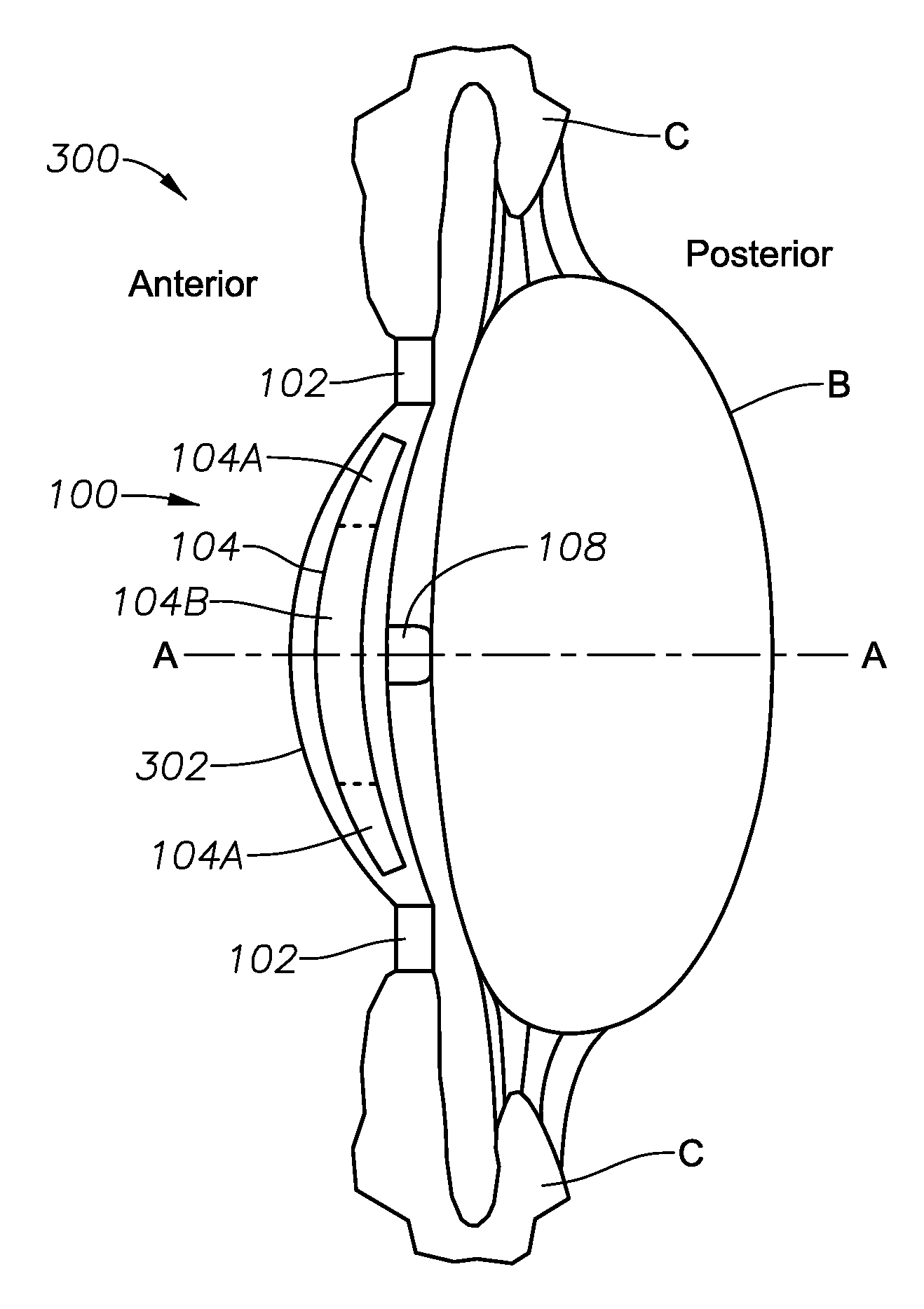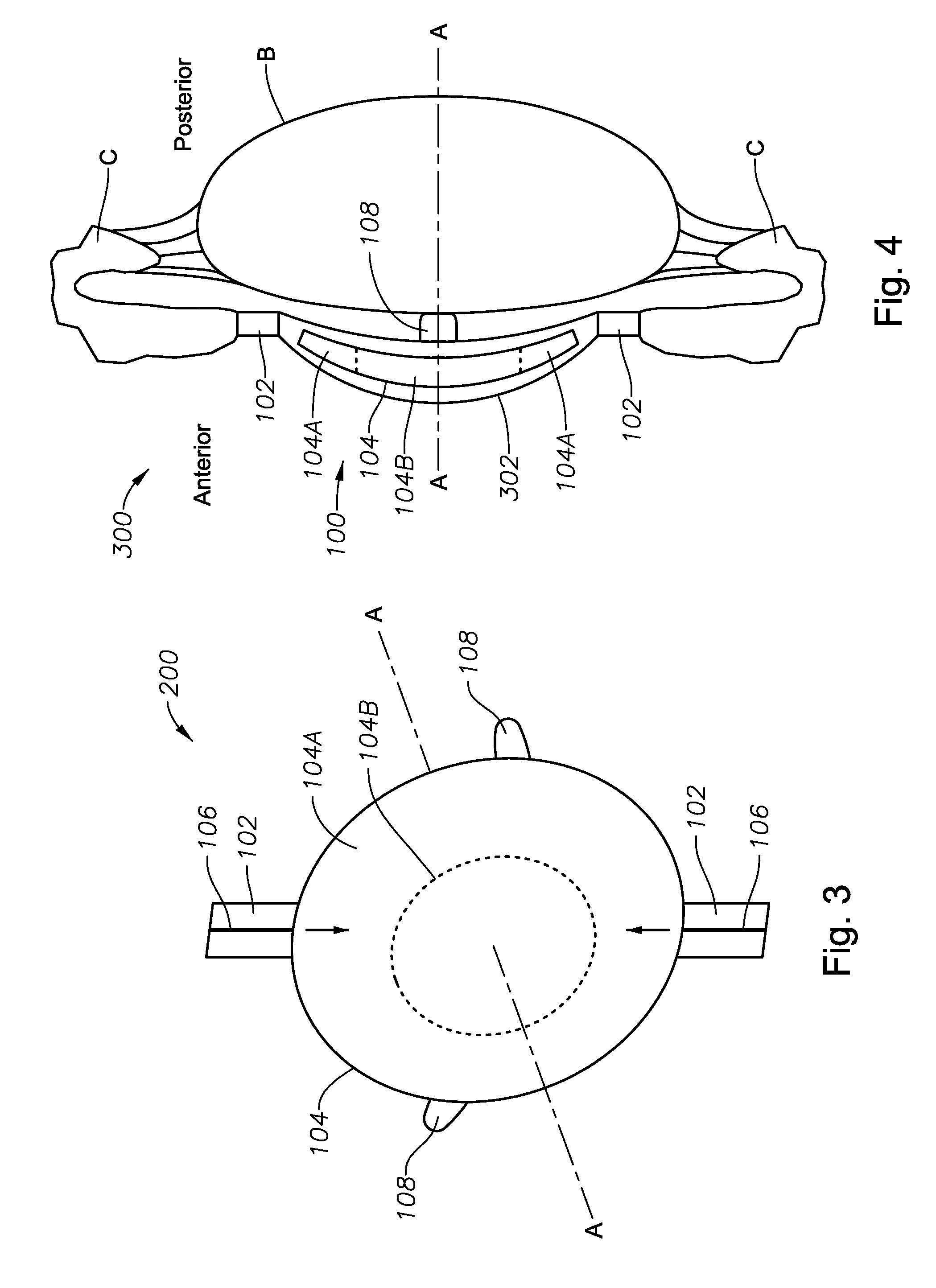Accommodating intraocular lens with ciliary body activation
a technology of ciliary body and lens body, applied in the field of accommodating lenses, can solve the problems of iol clouding, various degrees of blindness, posterior capsular opacification, etc., and achieve the effect of preventing the movement of the lens body
- Summary
- Abstract
- Description
- Claims
- Application Information
AI Technical Summary
Benefits of technology
Problems solved by technology
Method used
Image
Examples
Embodiment Construction
[0016]The accompanying drawings, which are incorporated into and constitute a part of this specification, illustrate one or more examples of implementations of the invention and, together with the description, serve to explain various principles and aspects of the invention.
[0017]FIGS. 1-4 illustrate an accommodating lens assembly 100, according to various implementations of the invention. As illustrated in FIG. 2, lens assembly 100 includes a haptic system 102, a lens body 104, and a wing 108. Lens assembly 100 is illustrated with respect to an optical axis A-A that generally runs through the center of lens body 104. As shown in FIG. 1, the lens assembly 100 generally will be implanted within a patient's eye 10 in a position within or in front of the capsular bag B. For example, the lens assembly 100 can be implanted within the anterior chamber A of the patient's eye immediately in front of and / or engaging a forward portion of the capsular bag, with the haptics extending radially o...
PUM
 Login to View More
Login to View More Abstract
Description
Claims
Application Information
 Login to View More
Login to View More - R&D
- Intellectual Property
- Life Sciences
- Materials
- Tech Scout
- Unparalleled Data Quality
- Higher Quality Content
- 60% Fewer Hallucinations
Browse by: Latest US Patents, China's latest patents, Technical Efficacy Thesaurus, Application Domain, Technology Topic, Popular Technical Reports.
© 2025 PatSnap. All rights reserved.Legal|Privacy policy|Modern Slavery Act Transparency Statement|Sitemap|About US| Contact US: help@patsnap.com



